The Serbian capital has seen a thing or two. From pork and coffee to Attila the Hun, the essentials for enjoying and understanding the White City.

Belgrade’s been around the block. Belgrade is seriously old, and it’s seen a few things. Belgrade is the largest city in Serbia and its capital, but the “white city” has taken many forms since the beginnings of its settlement between 50,000 and 20,000 years ago. Thanks to its strategic location at the confluence of the Saba and Danube rivers, and intersection of Western and Oriental Europe, Belgrade has been fought over in 115 wars and razed to the ground 44 times, including by Attila the Hun, who had his way with the area in A.D. 442. In 1521 Belgrade was conquered by the Ottomans, and there followed a period of tug-of war between the Ottoman and Austro-Hungarian Empires, who took turns destroying the city, each leaving behind a cosmopolitan legacy. Belgrade was also the capital of Yugoslavia from its inception as a kingdom in 1918, throughout the post World War II socialist era, right up until Serbia was the last man standing in 2006. Serbs are notorious for their nationalism, but many Belgraders still express a ‘yugonostalgic’ longing for the multiculturalism and porous borders of the socialist era, with their shared origins and languages (Serbian, Croatian, and Bosnian are more or less reciprocal, although Serbian is the only one to use the Cyrillic alphabet).
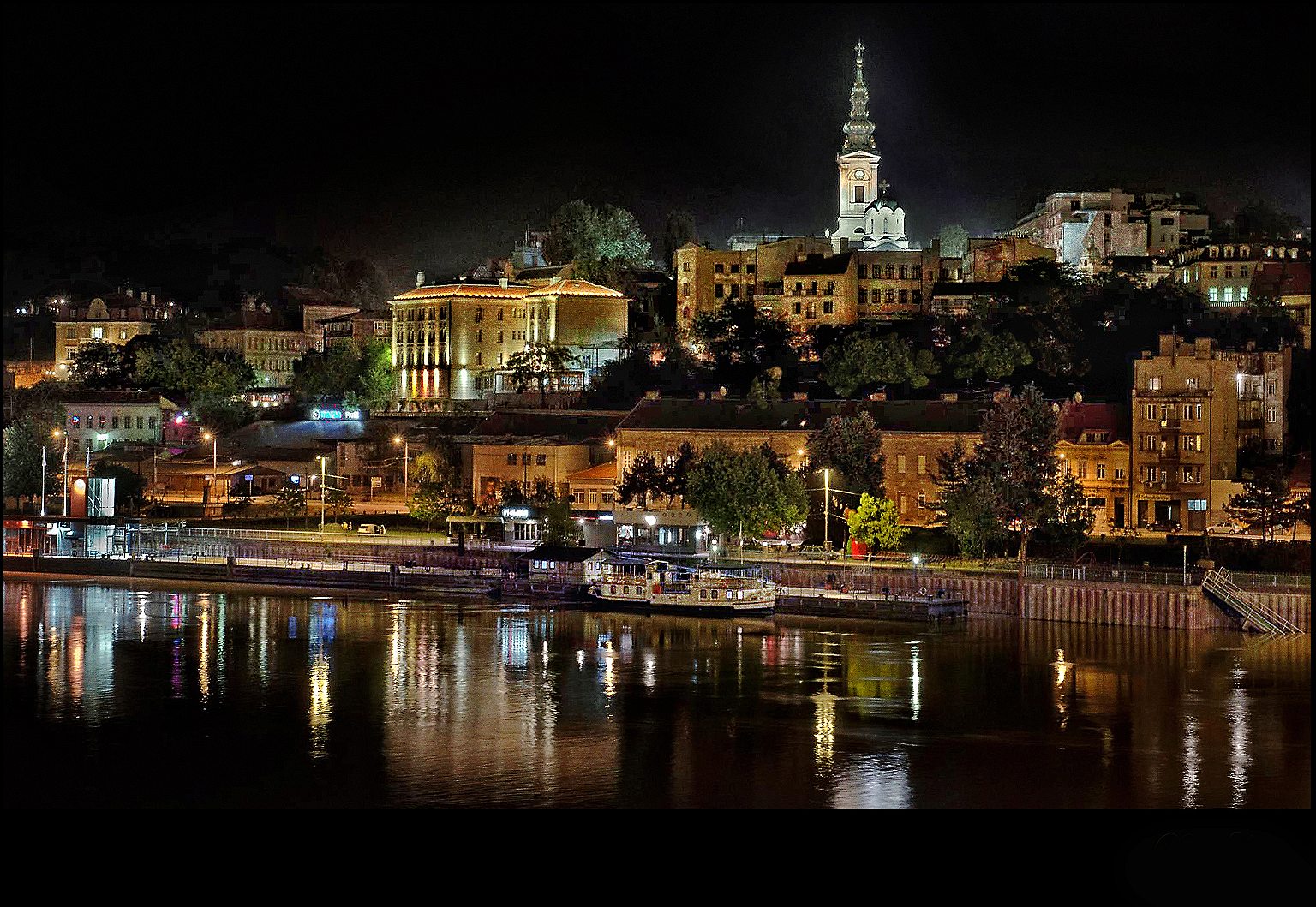

It has a split personality. Bisected by the Sava river, Belgrade is a town of two halves: the old and the new. New Belgrade was constructed during the socialist era and the grid of blocks retains its Soviet feel. It’s definitely worth exploring the area to get a feel for this important part of the region’s history, but most of the action is confined to the ‘old’ side. Different again, on the same side of the Sava as New Belgrade is Zemun, which used to be a separate city to Belgrade—a fact its residents will not let you forget. While Belgrade proper was under Ottoman rule, Zemun was an Austro-Hungarian outpost. Nowadays Zemun is officially part of the city of Belgrade, but climbing to the top of Gardos hill or a seafood lunch at a kafana along the banks of the Danube still feels like a mini-break from the main metropolis.
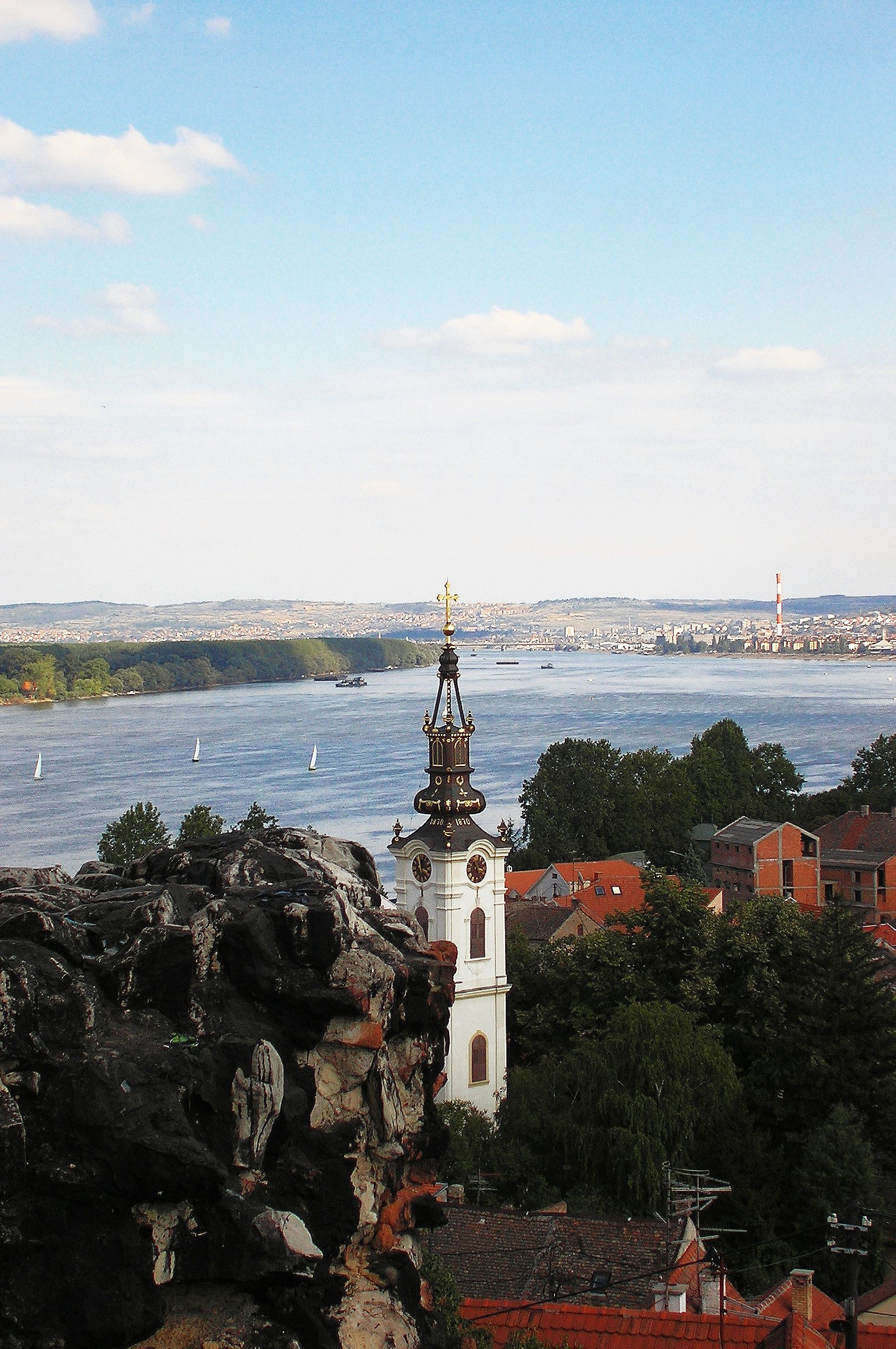

Don’t mention the war. Be conscious that most people you will talk to in Belgrade have lived through the trauma of the Yugoslav wars, which lasted for a decade until 2001, ending the pan-Slavic experiment. The violence perpetrated by Serbian forces led the fledgling post-socialist republic to be ostracised from the international community for several years, while internally they struggled under the corruption and repression of the Milosevic era. A quick walk down Nemanjina Street and you’ll quickly realize why Belgrade’s recent history remains so present in people’s minds—the enormous destruction of the Yugoslav Ministry of Defence buildings, bombed during the NATO attack in 1999, dominates the streetscape.
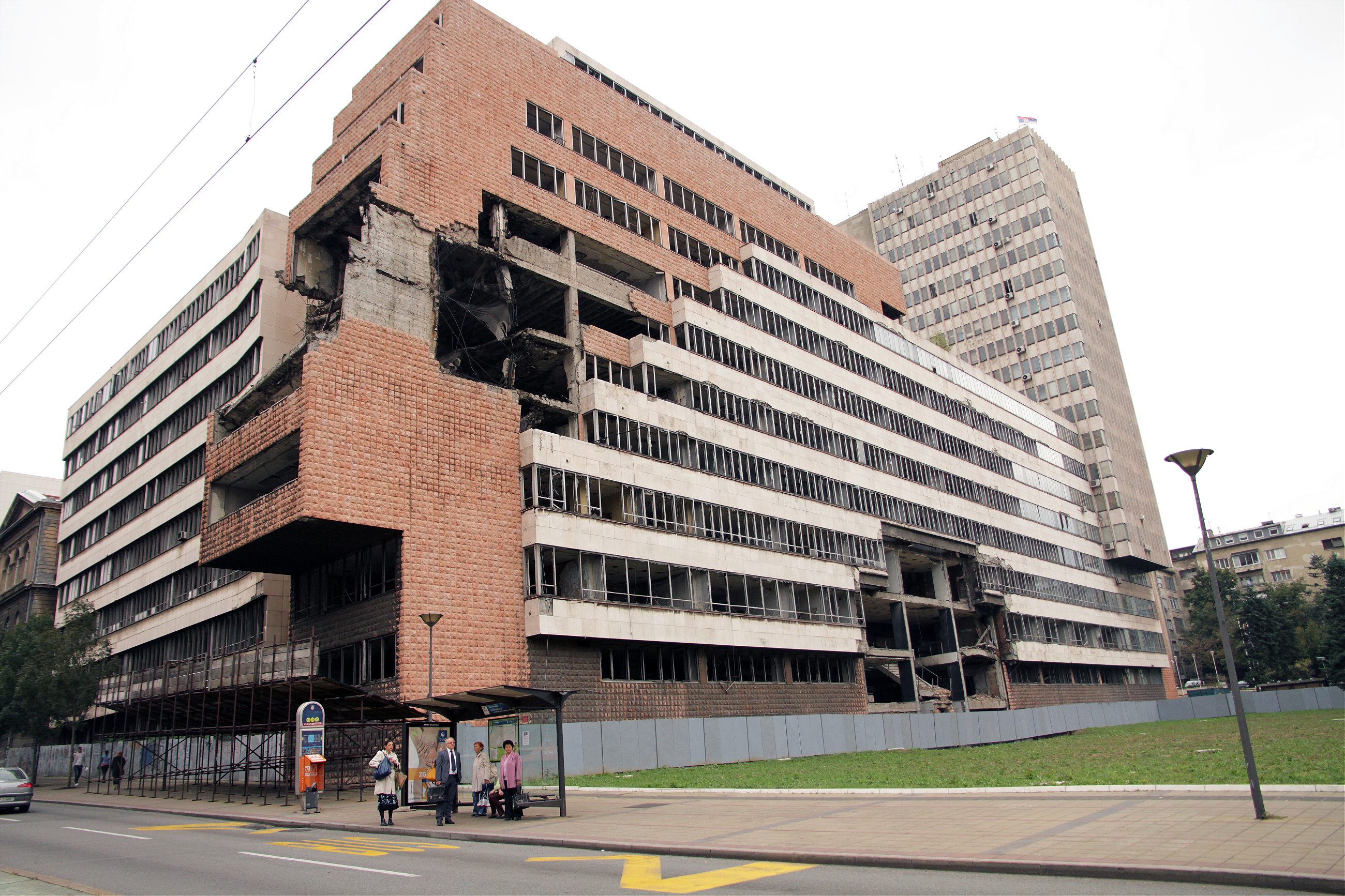
The former Yugoslavia was sliced and diced into a collection of nation-states bound by ethno-religious borders. These borders came about after the South Slavs (who migrated from an area around the Ukraine and Poland) crashed the Byzantine party in the Balkans regions, resulting in some religious osmosis from their new neighbours. The Serbian Orthodox church is a hangover from the early Eastern Orthodoxy, Catholic Croatia congregated around the Roman religion, while the Ottomans’ Islam took root in Bosnia. Yugoslavia, first a kingdom and later, after World War II, a socialist regime headed by the still widely-adored Marshal Josip Broz Tito, was the region’s attempt to reignite a pan-Slavic identity and bring the religious disparity under one roof.
The post-war years have not been kind to Belgrade: although some sectors of Serbia’s economy are on the up, helped by the promise of E.U. accession, the average wage remains low and unemployment, especially among the youth, is high. The ongoing political tension has resulted in a deep suspicion of the government, as well as foreign powers such as the U.S. and the E.U., that can border on conspiracy theory. The lack of capital in the Belgrade is visible throughout the city’s urban environment—blackened facades, cracked and crumbling flagstones, and out-of-date infrastructure.
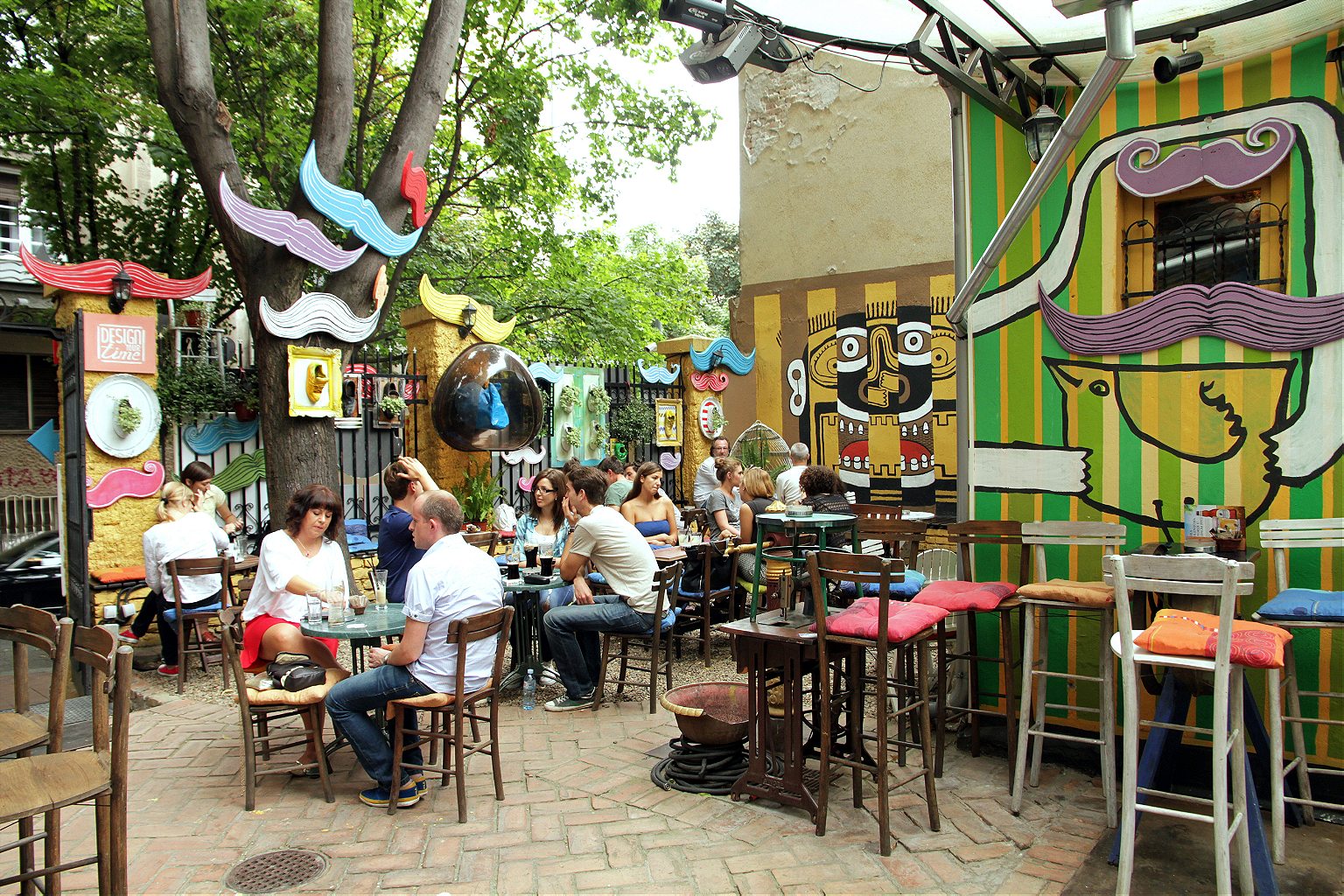

But Belgrade knows how to party. Despite the millennia of tumult, from Attila the Hun to Slobodan Milosevic, shed any pre-conceived notions of war-ravaged Balkans—people in Belgrade like to have a good time. Cafés and bars are heaving day and night, and the terraces that crowd the pavements remind you that Italy and Greece are not so far away in terms of distance and culture. Belgrade has the Mediterranean lifestyle without the coastline. Coffee is taken very seriously here, but as the sun goes down, the espresso cups are replaced by beers or spritzes (the city’s de facto cocktail). Bars are squeezed into any available space—above, on, and below street level. One of the best things about Belgrade is exploring these neighbourhood establishments, each with their own distinct character. Use your discretion and you’ll find the staff and regulars (many of whom speak excellent English) will usually be very welcoming.
Drinking coffee is a full-time job

Coffee is a serious business. It’s probably not an exaggeration that for some people in Belgrade drinking coffee is a full-time job. The city was put on the drip after the Ottomans brought their brew with them in the 16th century, which explains why ‘domestic’ coffee, or kafa, bears a strong resemblance to what many people know as Turkish. The story goes that the very next year the first kafana (coffeehouse) was opened in Belgrade, in 1522.
For those who find the bitter viscosity of kafa a bit much, espresso is no less of an occupation here, and is probably more common these days, with a slew of independent cafes and chain stores opening around the city. If you’ve had the misfortune of living in less caffeine-oriented places, you’ll be astounded by the quality while being bemused that menus also usually offer Nescafe. There is also a new wave of specialty local roasters fuelling the city’s addiction—Przionica is one worth checking out if you worship at the altar of the bean.


The market is where it’s at. If you want to experience the heartbeat of Belgrade, head to the green markets, held daily. The biggest is Kalenic, but you can’t beat Zeleni Venac: the crazy architecture, spectacular view, and central location. All Belgrade markets have a flea market and fresh produce section. In the latter, locals hustle their homemade specialities: ajvar, kajmak, pickled chillies, honey, and even homemade rakija (a dangerous yet delicious prospect) sold in recycled glass jars or plastic bottles. It’s common not to see any other tourists, so communication can be difficult if you don’t speak Serbo-Croat. A few courteous essentials—dobar dan (good day), hvala (thank you)—a lot of gesticulation and a smile will get you pretty far. If all else fails most vendors will write down the price for you.


You must acquire the taste of rakija. Balkan states, despite their national pride, can’t deny that they all have rakija in common. A fruit brandy, rakija can be made from quince, pear, apricot, or peaches—but the Serbian national version (and arguably the most intense) is sljivovica, made from the Damson plums that grow in abundance throughout the country (there is even a village called Šljivovica in Western Serbia). ‘Real’ rakija is made from pure fruit, with no added sugar, and is double distilled—many Serbs make their own, swearing by its health benefits and drinking a small glass, alongside a coffee and sweetened fruits, for breakfast.
Keep your rakija training wheels on at first with medovaca, which has honey added to make it softer and sweeter. Once you get a taste for it, work your way up to sljivovica, which is guaranteed to warm the heart (in fact the word rakija comes from an Arabic word meaning sweat). Rakija is served straight and sipped from small vials, accompanied by a glass of water to keep you from dehydrating. For something special, head to specialists Rakia Bar for a tasting of their artisanal creations. Živeli (cheers)!
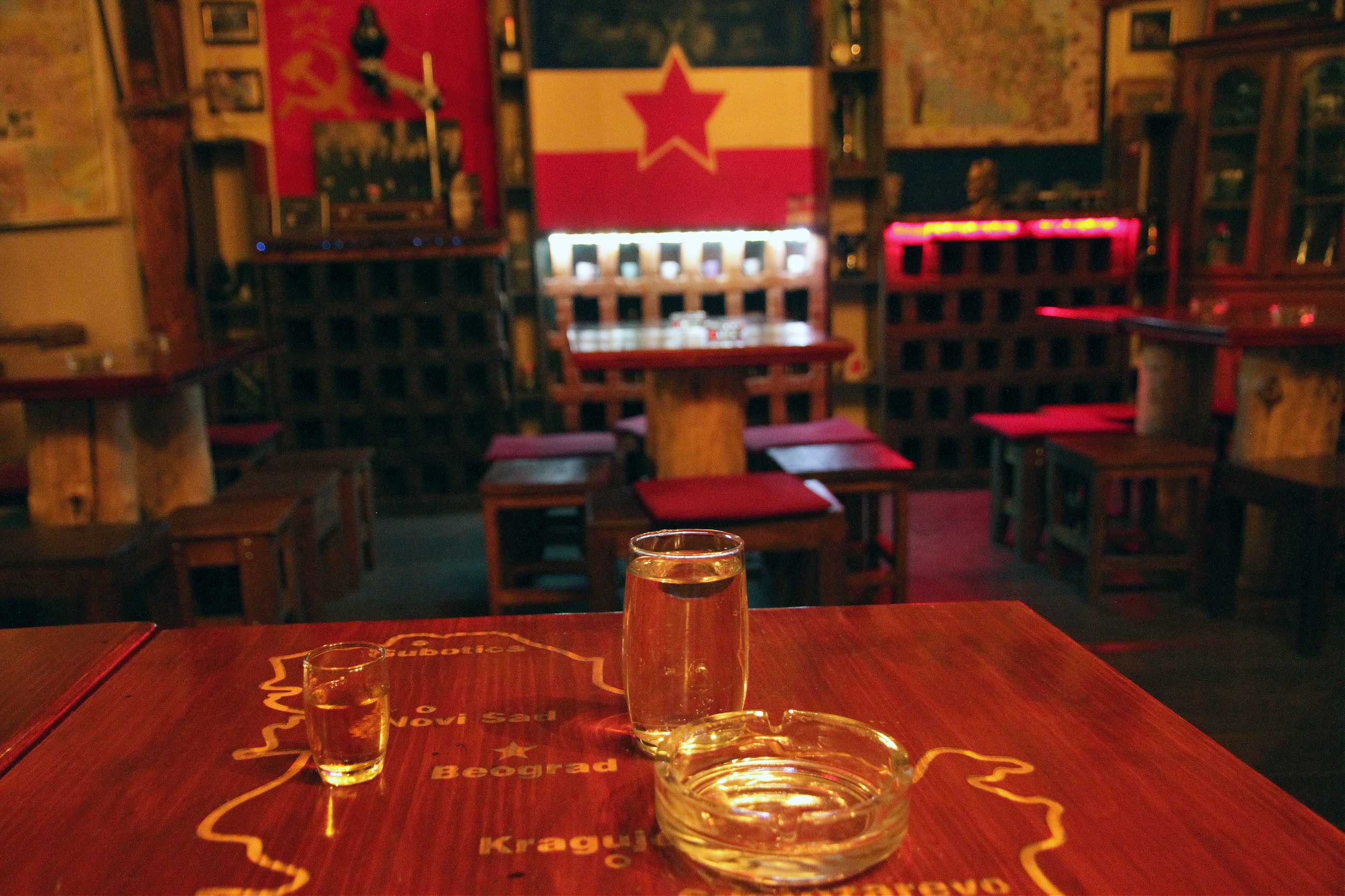

Breakfast burek is the new breakfast burrito. A proper Belgrade burek is a thing of beauty—there is a reason these things are sold by weight. The shattering crunch of layers of flaky pastry. The inevitable searing burn of the filling, punishing you for being too impatient. You tell yourself you won’t eat the whole thing but of course you do, until all that remains are stray, buttery crumbs. All over your chest. Burek are available in sweet (fruit or ricotta-like cheese) or savoury (anything from cheese, spinach, mushroom to meat) and are traditionally washed down with drinkable yoghurt—an intense combination that somehow works. You’ll definitely get the goods at old school bakery Pekara Carli: what they lack in variety, they make up for in freshness. If you’re into nocturnal consumption, Europan has a wider selection of fillings and is open 24 hours.

Serbian food = pork, sauce, repeat. Balkans cuisine is certainly no vegetarians’ paradise, unless you are happy to subsist entirely on burek. Belgrade’s food is an edible tour of the region’s history: you’ll find Turkish-influenced kifle, baklava, and cevapcici—a minced meat—sharing the menu with Greek specialties and Austrian-inspired torten and schnitzel, Vienna’s famous breaded pork escalope, which in Belgrade has been upgraded to become a hefty cream cheese-stuffed version which comes smothered in tartar sauce, and garnished with tomato and lemon slices forming a Karadjordjevic star—the Serbian Monarchy medal.
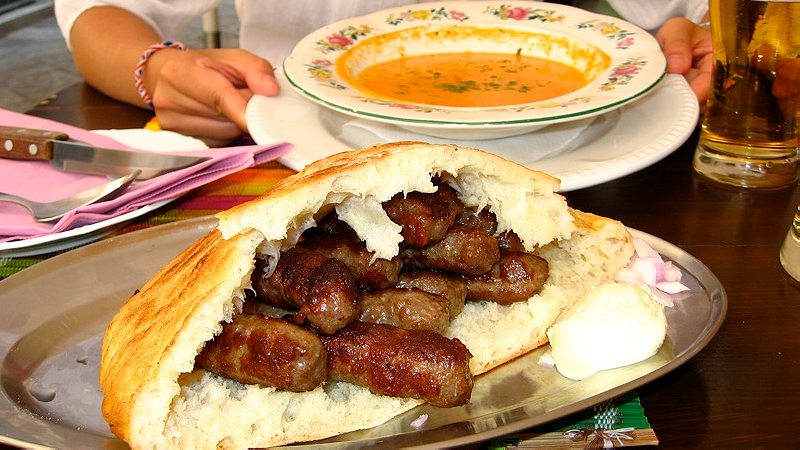
Traditional Serbian meals are full of strong flavours. Hearty stews and basically any form of meat—grilled, cured, or stuffed with cheese—feature prominently, usually served alongside salads, bread, and condiments. Sauces are big here, from kajmak (Serbia’s answer to clotted cream) to ajvar (a spicy, red pepper paste).
Legend has it the preponderance of pork originated as a form of gastronomic resistance to the Ottoman overlords. Serbian food might be rustic, but due to the fertile land and relatively late industrialization, the quality of ingredients is high, even in basic restaurants. For a lighter touch, there are several new restaurants putting a more refined twist on traditional tastes such as Pire Slow Food and Homa.
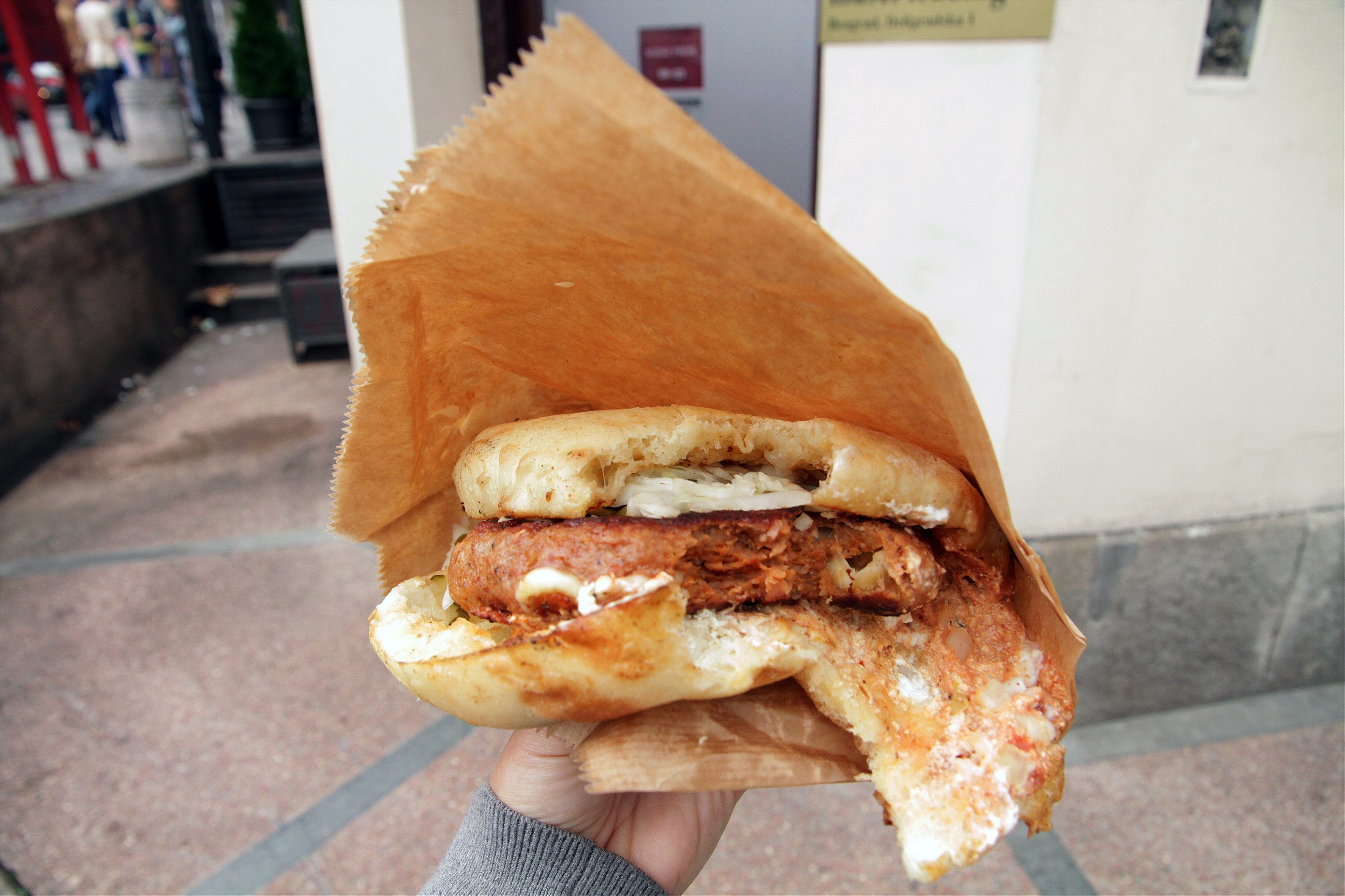
You can’t leave without trying pljeskavica—the hamburger’s illegitimate brother and a Belgrade staple. Loki is possibly the only pljeskavica purveyor salubrious enough to have a chandelier and is a great place to try these curiously spongy yet delicious grilled patties. The biggest are the size of dinner plates, folded over with their edges poking out of soft hamburger buns. ‘The lot’ Serbian style includes an insane amount of garnishes—pickled cabbage, onions, chilli, mustard, mayonnaise, tomato sauce, and spicy cream cheese. This big, wet mess is best enjoyed in your darkest moment, swaddled in napkins. Pizza in Belgrade has also been ‘Serbified’ (code for adding condiments). Locals queue at all hours of the night at Bucko Pizza on Francuska Street for thin-crust slices topped with a choice of colourful flavored spreads—the mushroom dip is oddly compelling.


Take a breath of fresh air—and hold it. Serbia has staunchly resisted kowtowing to anti-smoking lobbies—you can still smoke inside all restaurants and bars. Entering a restaurant through a smoky haze is certainly a novelty, but it becomes problematic when you don’t want to consume second-hand smoke with your meal, or at all. If you’re nostalgic at the thought of lighting up indoors (I’m convinced this explains the number of French tourists in Belgrade) this will be great news. For everyone else, the city offers a healthy quota of terraces, which give you a bit more room to breathe. If you’re spending time in enclosed spaces, take advantage of the city’s relatively cheap dry-cleaning the next day to ensure your clothes don’t bring back an olfactory souvenir.

In Serbia you can make your first million (in dinar). Serbia’s currency is valued pretty low compared to the Euro, making Belgrade a spendthrift’s dream as far as accommodation and food are concerned. As the economy has increased, so have Belgrade’s prices, but compared to most European cities you can eat, drink and sleep like a king, for less than a princely sum. Some of the neighbouring Balkan states are already E.U. members—to deal with the constant headache of cross-border exchange issues, you can exchange euro or U.S. dollars for dinar in ATMs, and there is also a plethora of menjacnica (money exchanges). As dodgy as these holes-in-the-wall look, with their gaudy flashing lights and post-apocalyptic vibe, the rates aren’t bad and you won’t be charged a commission. There’s not a great deal of variation so no need to shop around.
The abomination known as turbo-folk is still popular in Belgrade

Here, partying is a water sport. Technically it might not have a beach, but Belgrade’s surplus of river frontage means that water plays a big part in city life. Belgraders party all year round on splavs (short for splavovi)—bars and clubs on permanently moored boats along the banks of the Sava and Danube. Before you jump aboard, remember that the abomination known as turbo-folk is still popular in Belgrade (and this goes for land bars too).
Nothing will kill a waterside buzz like hours of souped-up folk music, so choose your splav wisely (20/44 is one known to have a more eclectic playlist). Into a more low-key river experience? Ada Ciganlija is an island-cum-peninsula smack-bang in the middle of the Sava. For those outdoors types it has a swimmable lake, sports fields, bike paths and loads of forests, plus concerts and festivals in the summer.


You can reclaim the city. Like any good ex-communist capital, Belgrade has no shortage of abandoned buildings. These days many of them have been given a new lease on life, whether as fully-fledged enterprises or underground cultural venues. Get a taste in riverside neighbourhood Savamala, a once-thriving commercial centre, now reborn as a creative hub. Jazz clubs and gay bars are cloistered amongst ruined townhouses next to the Brankow Bridge, new cafés inhabit warehouses on Karadjordjevic Street. Further out of the city, larger spaces like former studios Inex Films have become quasi-official headquarters for various arts and cultural organisations. You can usually wander around these graffiti-covered ‘not squats’ during the day, in the evenings they often host—albeit sporadically—exhibitions, film screenings, and gigs.
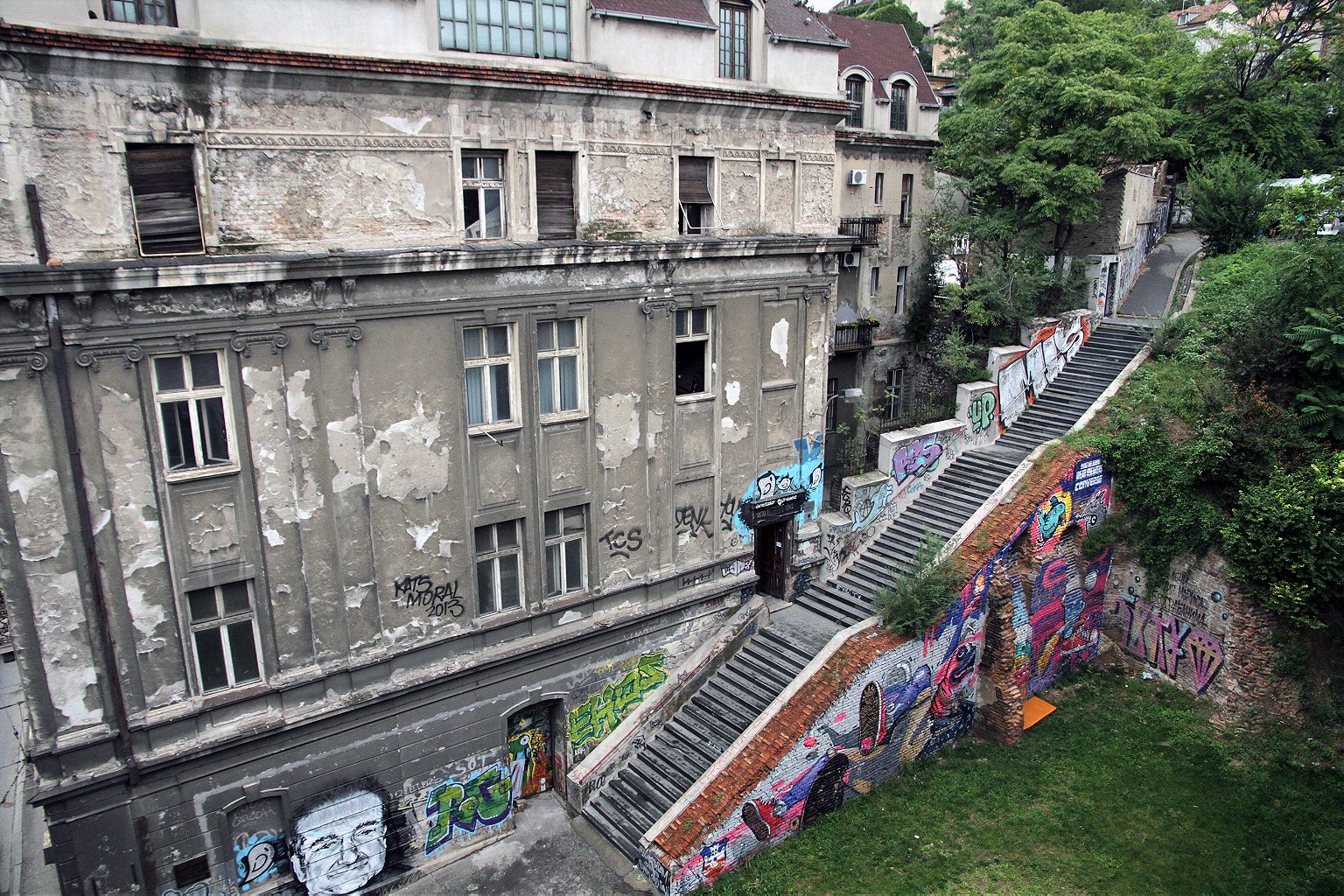

How to be a lonely visitor in Dorcol. There are plenty of neighbourhoods in Belgrade where you’ll feel like the only visitor, and Dorcol, stretching from the lower half of the old city right down to the Danube, gets my money. Locals there are notoriously parochial, and for good reason—it has the best of the old and the new. Home to one of Belgrade’s biggest clusters of historic buildings, you have easy access to the rest of the city and plenty to keep you busy close by. The former industrial zone near the river is slowly gentrifying: drink some of the city’s best coffee at micro-roastery Przionica or take a break from barbecued meats at fine dining restaurant Homa. Stately thoroughfare Kralja Petra is a one-street archi-tour, with candy-colored facades ranging from Baroque to Art Deco and charming historic frontages like San Marina Chocolates and Sava Perfumes.

How to avoid getting stuck in the S bend. Belgrade’s two most overrated streets are easy to remember: they both start with S and they intersect. Skadarska, the so-called Balkans Street, may have once been bohemian, but is now filled with competing, cacophonous Serbian bands and ersatz eateries. There are a couple of decent historic places serving solid Serbian fare, but there are fewer tourists and far better food and ambience elsewhere. Belgrade’s best known bar strip, Strahinjića Bana, is the other end of the spectrum. Basically a very long catwalk for locals and tourists, the panoply of sterile bars and restaurants, over-priced beauty salons and black SUVs is good for people watching and not much else. The good news is, walk only metres from this street and you’ll find loads of options with much more soul.
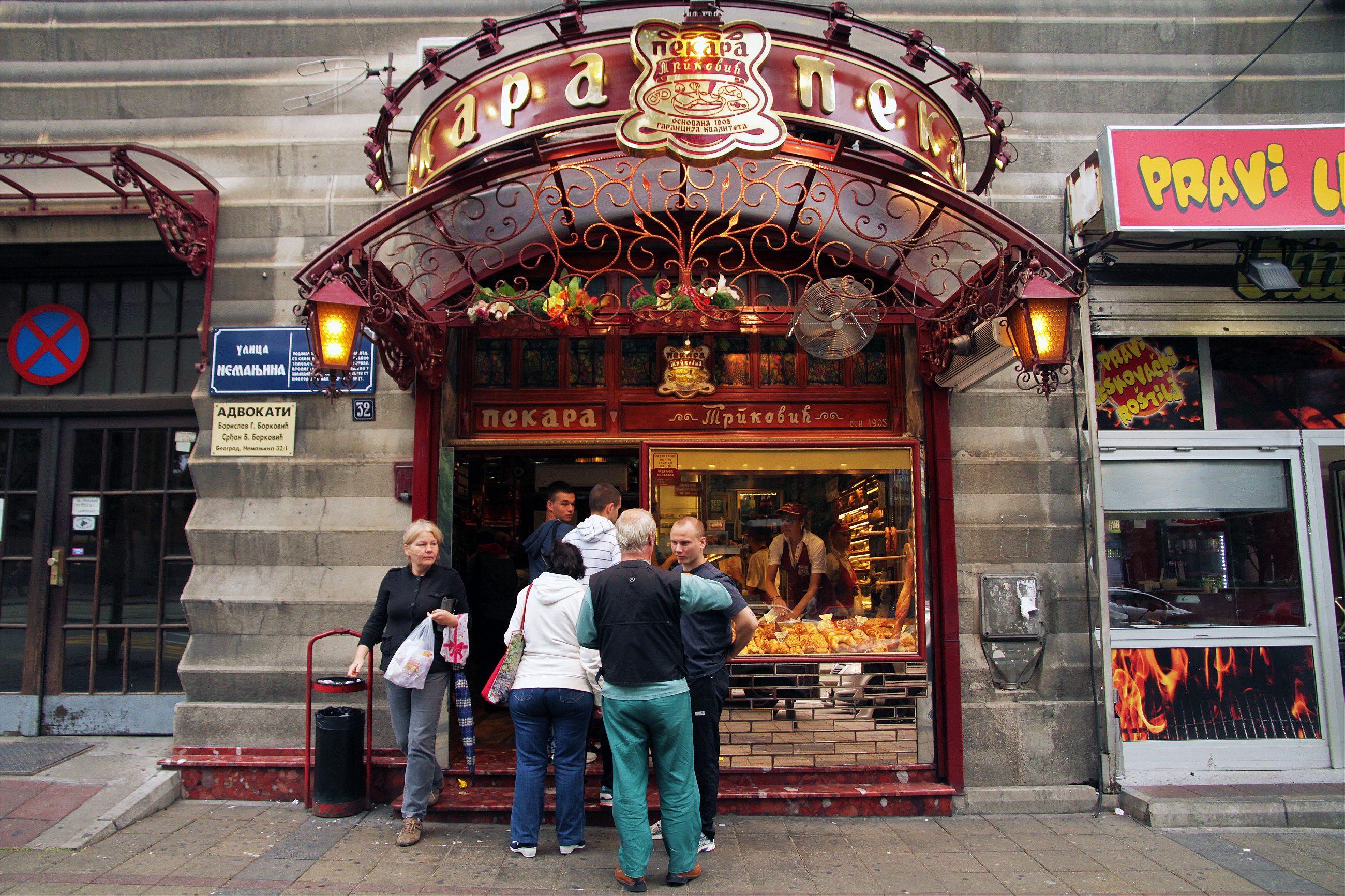

C is for Serbo-Croat. If you’re stressed about Cyrillic, don’t be—in Serbia, Serbo-Croat is usually written in Latin script as well and words in Latin script are pronounced phonetically. If you’ve got a basic knowledge of Greek, Russian, or another Slavic tongue—or you’re a language savant—you’ll probably be able to decipher some of the signs that are only in Cyrillic. You might run into problems with Google Maps, which normally puts both Cyrillic and Latin versions for street names—except where there’s not enough room on the screen. Many Belgraders (especially the younger generation or those working in retail or hospitality) can speak pretty impressive English, and even non-touristy restaurants will often have English menus. Memorize a couple of essentials to help you on your way: pivo (beer), molim (please).


Do the time warp. One of the most enduring legacies of the Ottoman occupation, a kafana is a traditional café—the kind of place you enter and time seems to stand still, if not rewind. Although found throughout the Balkans, in Belgrade they are an institution, achieving cult status even among the younger generations. Generally tending towards the patriarchal side, it is possible to find some that have a slightly more gender-balanced clientele. Beyond copious amounts of coffee, beer and rakija, these smoke-filled dens will dish up a best of compilation of Serbian classics from fat, glistening pork sausages served with white beans in sauce to cevapcici (grilled, skinless sausages). You may cross the threshold and feel like the ultimate out-of-towner among the regulars propping up the bar, but do your reconnaissance, hold your ground and crack out every last skerrick of your Serbo-Croat and who knows, the cool kids might let you join their card game.
Top image: Jill Pope